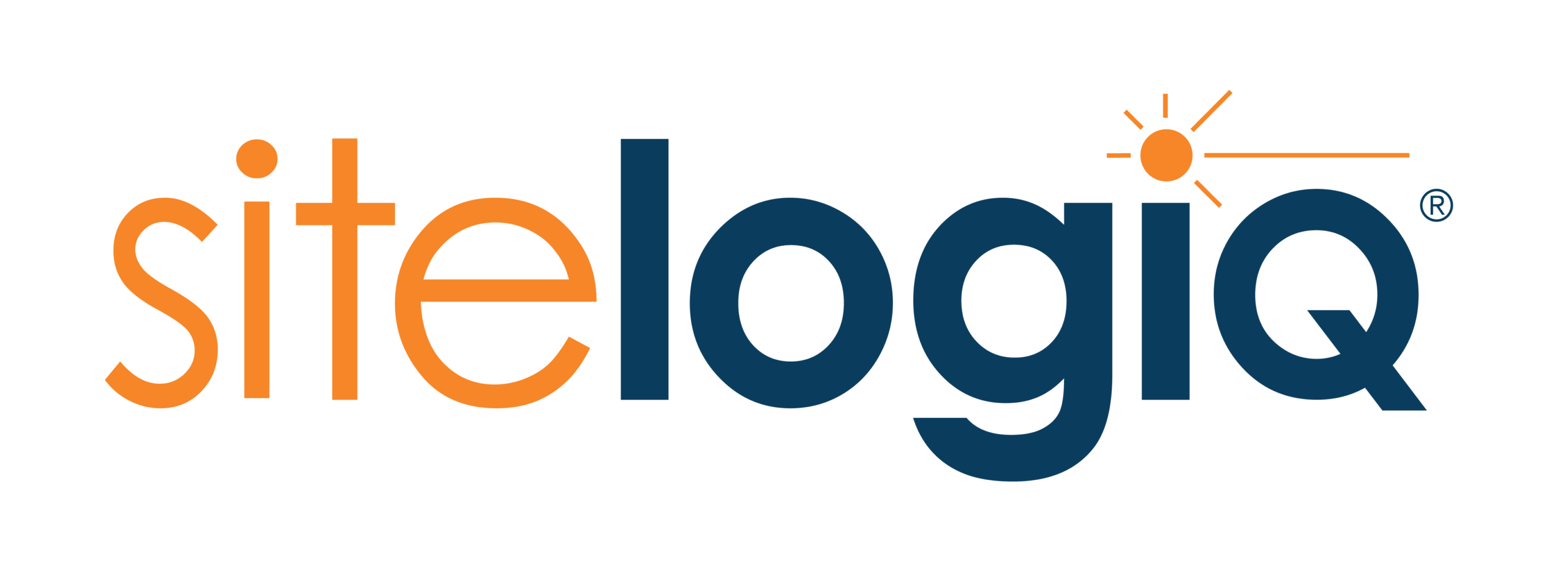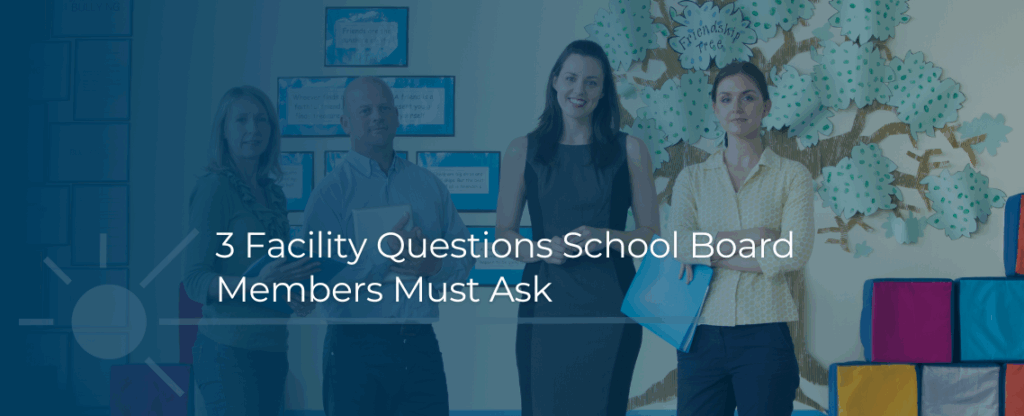
U.S. school district infrastructure received a D+ by the American Society of Civil Engineers (ASCE), rating them in poor condition. The ASCE also reports that half of public schools have not undergone major improvements since their original construction, with the average school age being 49 years. Poor facility conditions in schools result in costly emergency repairs, unexpected closures, loss of learning hours, and community frustration.
And the condition of our school infrastructure has only declined as there continues to be a gap between funds that are used versus funds needed for facility improvement. The funding gap has increased from 85B in 2021 to a projected 400B+ by 2033. Every school district In the United States is facing fund availability pressures.
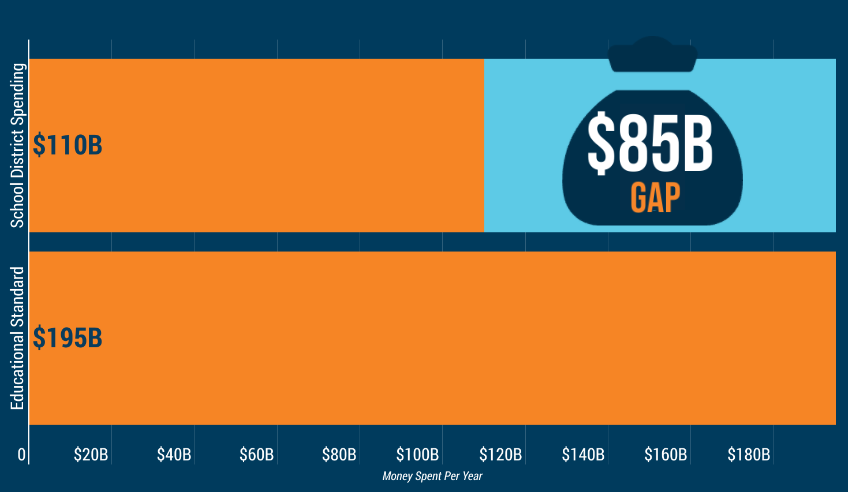
As a school board member, your role extends to ensuring effective oversight and governance of how funds are being spent to maintain warm, safe, and dry learning environments for your students. With school board members nationwide managing a staggering $600 billion in funds impacting over 50 million students, the task is enormous but critical for ensuring that our educational facilities serve the current and future needs of our communities.
But being a board member can be overwhelming when you’re being asked to understand the priority and impact of a highly technical facility improvement project. Nor does it give you the technical expertise to explain to your community why that generator repair is more important than the new scoreboard they want for their sports stadium.
So how do you, as a school board member, make sure that you are building trust with your community and that you’re being a good steward of the communities’ tax dollars without this technical expertise? Here are some questions to ask your facility team to guide effective governance conversations with your district administration.
1. What grade do your facilities receive?
We measure student performance by grade to understand where they excel and where they might need some extra assistance, and the same holds true for school facilities. We need to measure the facilities our students are using and ensure they receive an adequate grade to support student performance and meet ever-evolving needs.
The first step is to understand the state of the facilities the districts own or utilizes – where are these facilities, who are they serving, and what’s the condition of these buildings? Where are the biggest risks of asset failure across the district that could cause a school not to open. Regular facility assessments should be used as a tool to gather data about the current needs of the district.
Like with students, you should understand the high level ‘grade’ of your facilities to Identify where the greatest areas of need are:
- What is the current condition of our major assets across the district?
- What are the CO2 levels in our academic buildings?
- Is there equity in the ‘grade’ or functionality of our facilities across the district?
Being transparent with this data allows your district to create alignment on what the priorities of the district should be to address risks.
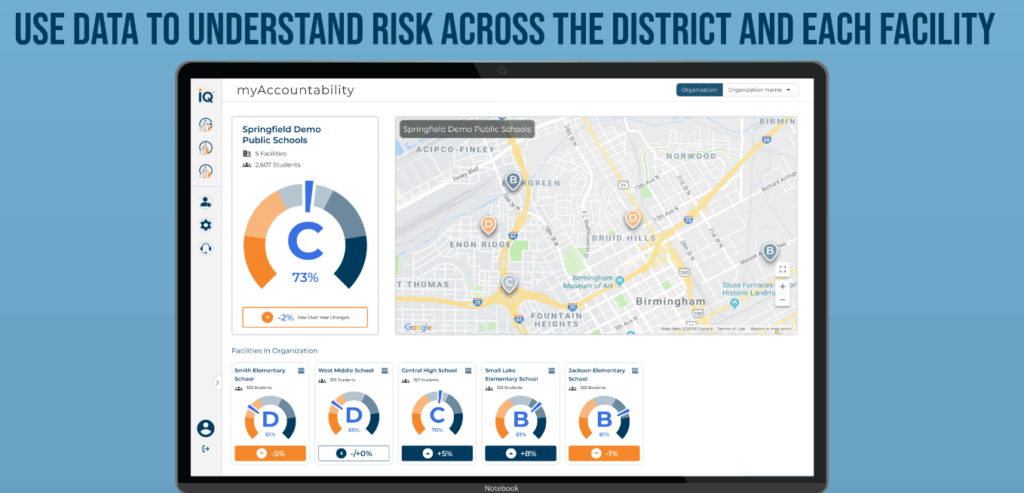
2. Why Is our plan, our plan?
Understanding the physical and functional condition of facilities enables your district to understand what work should be prioritized to maintain and improve them. A K-12 master facility plan should encompass the upgrade and modernization of major assets with a timeline that allows for budget planning and minimal learning disruption. This helps your district avoid unexpected emergency repairs that can strain finances, cause school closures, and create a lack of trust with the community.
By looking at data about the plan, we can start to understand where the funds are going, when they are being allocated, and why are they are being allocated the way they are, answering these questions:
- Does this plan account for managing capacity towards enrollment trends?
- How does this plan ensure we’re leaving a financially responsible legacy?
- Does the plan meet the 4 must haves of strategic master facility planning?
- Does the plan have the level of community visibility and transparency that the board is expecting?
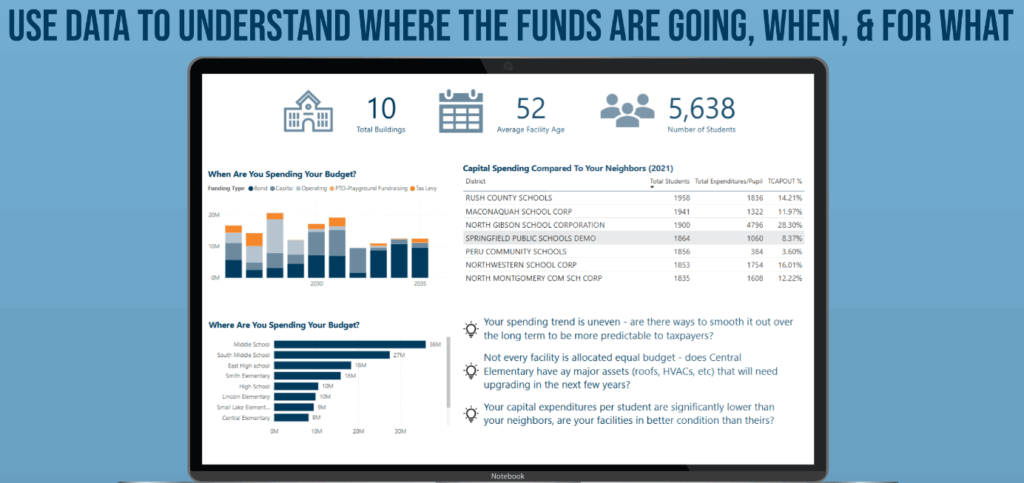
3. Does our plan’s spending align with the priorities of the district and the community we serve?
As a school board member, one of your core responsibilities is to set the priorities and goals of the district. This strategic role is not only about identifying what is most important for the students, staff, and community but also ensuring that every decision aligns with these established priorities.
It’s essential to regularly ask, “does our plan’s spending align with the priorities of the district?” This question serves as a vital checkpoint that keeps the board’s focus aligned with the district’s long-term objectives and educational mission.
Assessing how funds are allocated in relation to district priorities ensures a transparent use of the available funds. It helps maintain accountability across all levels of district management with the community by asking:
- How are our facilities tied to our district’s strategic goals?
- How are our upcoming projects enabling us to reach these goals?
- What are our long- and short-term priorities for facility upgrades and modernizations? And why are these the priorities? (AKA, where is our money going and why is it being allocated that way?)
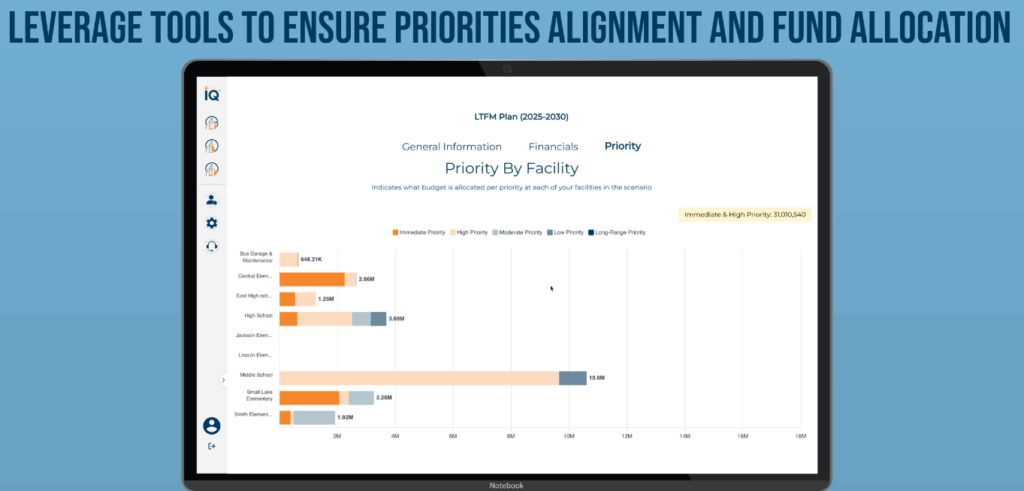
Asking these questions allows your district to stay proactive rather than reactive, which is key to managing your district’s facilities effectively and helping the district ensure no lost learning hours due to its facilities. It’s about making sure you’re not just spending money, but spending it wisely and fairly, so that you’re setting up the next generation of board members, and ultimately our students, for success.
Arming your administrators with the answers
Having answers to these questions might not come overnight. Depending on your district and how strategic you have been with facility planning, you might be in different stages of being able to answer these questions. By using a software tool such as mySiteIQ, you can use data and easily understood graphics to work together as a team to ask and answer these questions. This allows you to make better data-driven decisions, align on district facility improvements priorities, and ensure your master facility plan and budget addresses those needs.
